Video editing is an essential component of any business marketing strategy. Whether creating a company overview video, product demo or simply sharing customer testimonials, professional-quality editing will help your videos look their best and make the most impact.
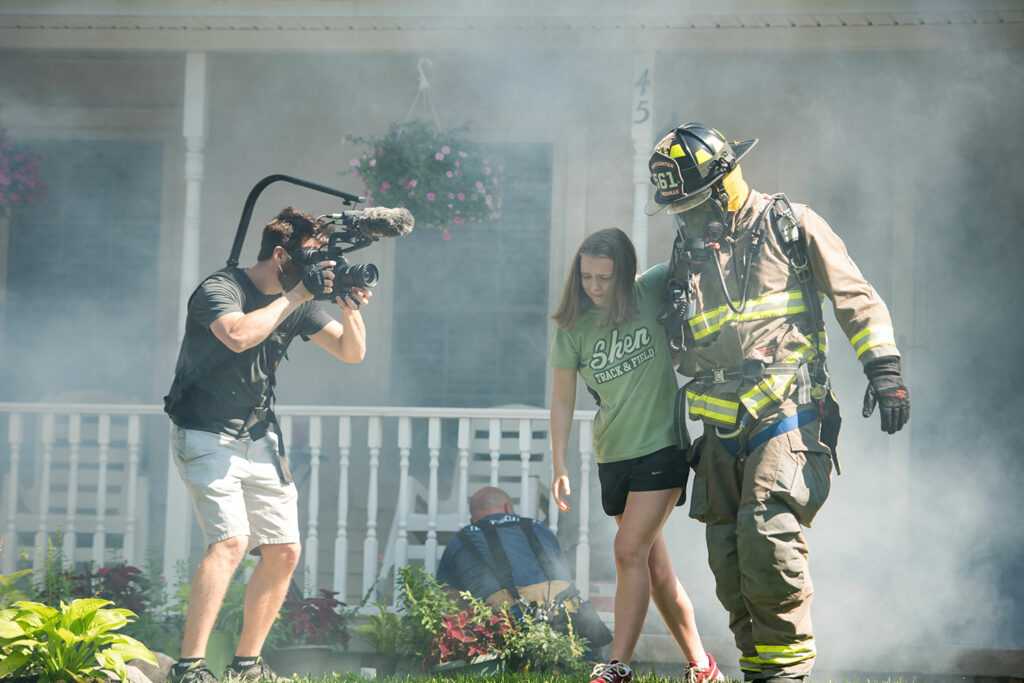
In this post, we’ll discuss the top reasons why businesses should invest in video editing services. By the end, you’ll be convinced that video editing is a must-have asset no matter what kind of business you own.
So let’s kick off by understanding what video editing is!
What is video editing?
Video editing is the process of manipulating and rearranging video footage to create a new, cohesive video. The video editing process often involves cutting unnecessary footage, splicing together different shots, adding transitions and effects, and setting the scene with music and other sound effects.
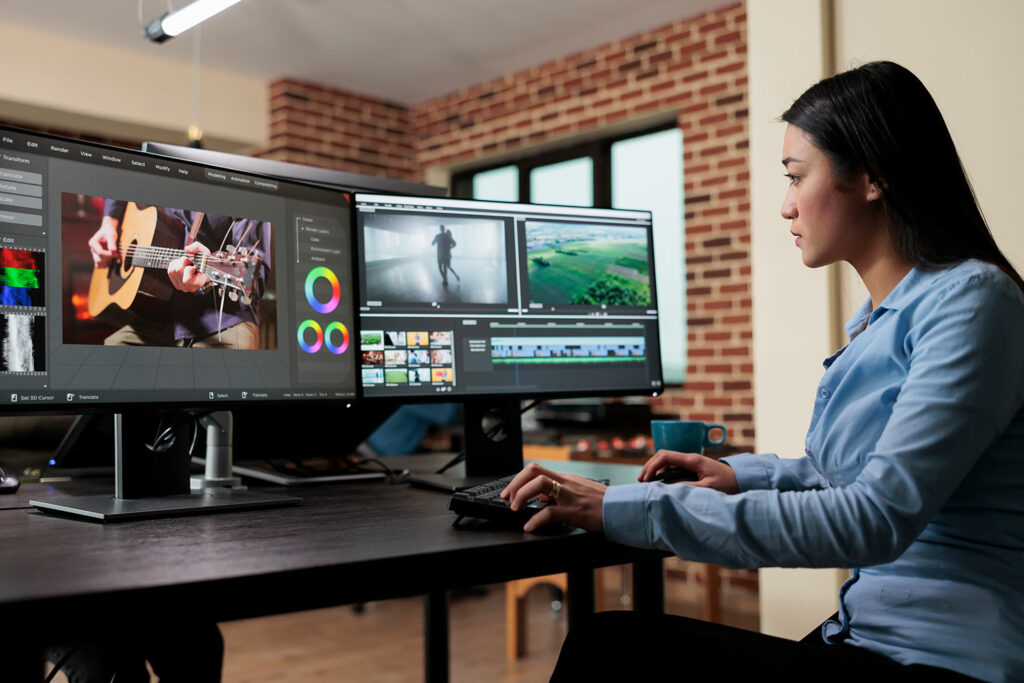
Why is video editing important for businesses?
If you’re not currently using video editing in your business marketing efforts, now is the time to start. Here are six reasons why:
1. Helps you create professional-looking videos
Professional video editors have the best video editing software and tools at their disposal to help you create videos that look polished and professional. Even if you have great footage, if it’s not edited well, your video will reflect poorly on your business.
Quality editing can help correct any errors or poor footage that may have been captured. A good editor can take your raw footage and turn it into a masterpiece.
2. Makes your videos more engaging
Engaging videos are key to holding viewers’ attention. A skilled video editor knows how to add special effects, transitions, and other elements to make your videos more engaging and visually appealing.
This is especially important if you’re creating marketing videos or product demos, as you want to keep viewers engaged from beginning to end.
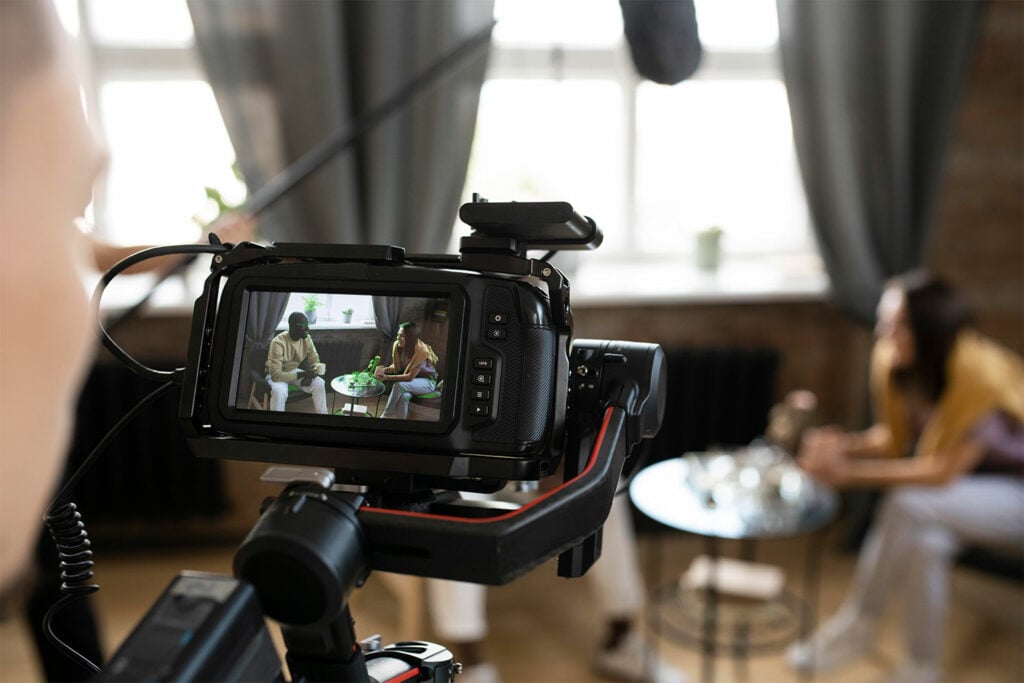
3. Helps you tell a story
A good story is essential for any video, whether a short vlog or a feature-length film. A video editor can help you take disparate footage and turn it into a seamless story that engages viewers and drives your business’s message home.
By cutting out unnecessary footage and adding key scenes, you can create a video that is both informative and entertaining.
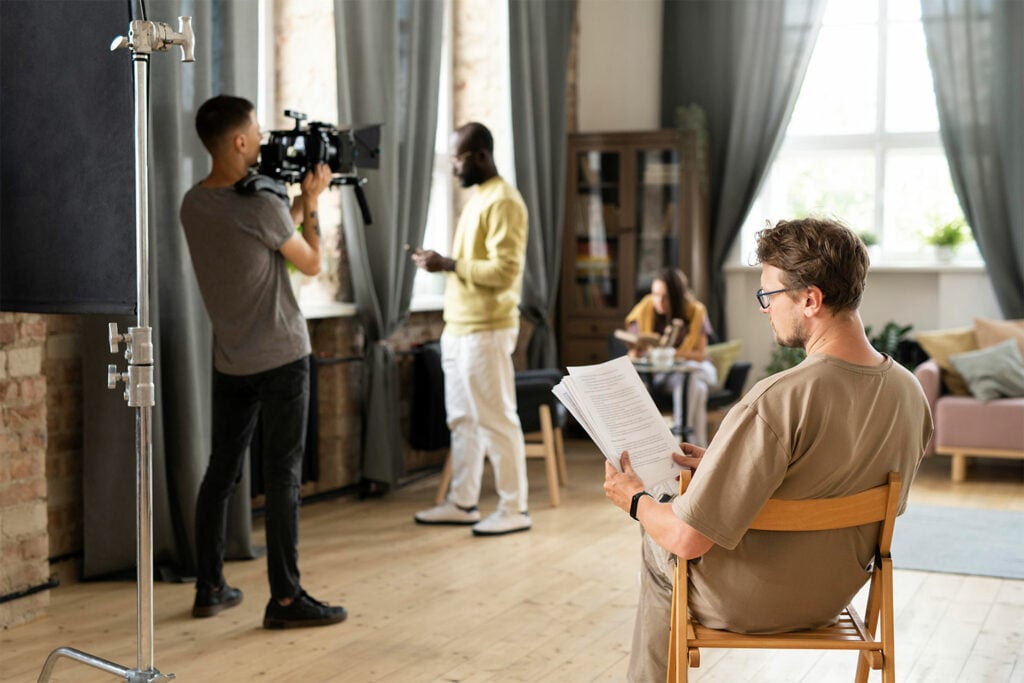
4. Makes your videos more shareable
If you want people to share your videos, they need to be engaging and easy to watch. A professional video editor will ensure your videos are the right length, have captions or subtitles if needed, and don’t contain any footage that could turn viewers off.
This will make your videos more shareable and increase the chances that they’ll be seen by a wider audience.
5. Saves you time
Editing videos takes time, and if you’re not experienced in video editing, it can be a very time-consuming process.
Hiring a professional video editor will save you time and ensure that your videos are edited quickly and efficiently. This way, you can focus on other aspects of your business while your video editor takes care of the hard work.
6. Make a good impression
Well-edited videos show that you’re professional and detail-oriented – two qualities every business should aspire to.
Types of video editing that businesses can use
There are many different types of video editing. The type will depend on your business goals and the type of video you’re creating. Here are some of the most common types of video editing:
1. Linear video editing
Linear video editing is the most basic type of editing and is typically used for shorter videos. In linear video editing, you string together different shots in a linear, chronological order. This type of editing is simple and straightforward and best for videos that don’t require fancy effects or transitions.
2. Non-linear video editing
Non-linear video editing is a more advanced type of editing that gives you more control over your footage. In non-linear video editing, you can rearrange footage and add effects or transitions without disrupting the chronological order of the video.
This type of editing is best for longer videos or videos that require more complex editing.
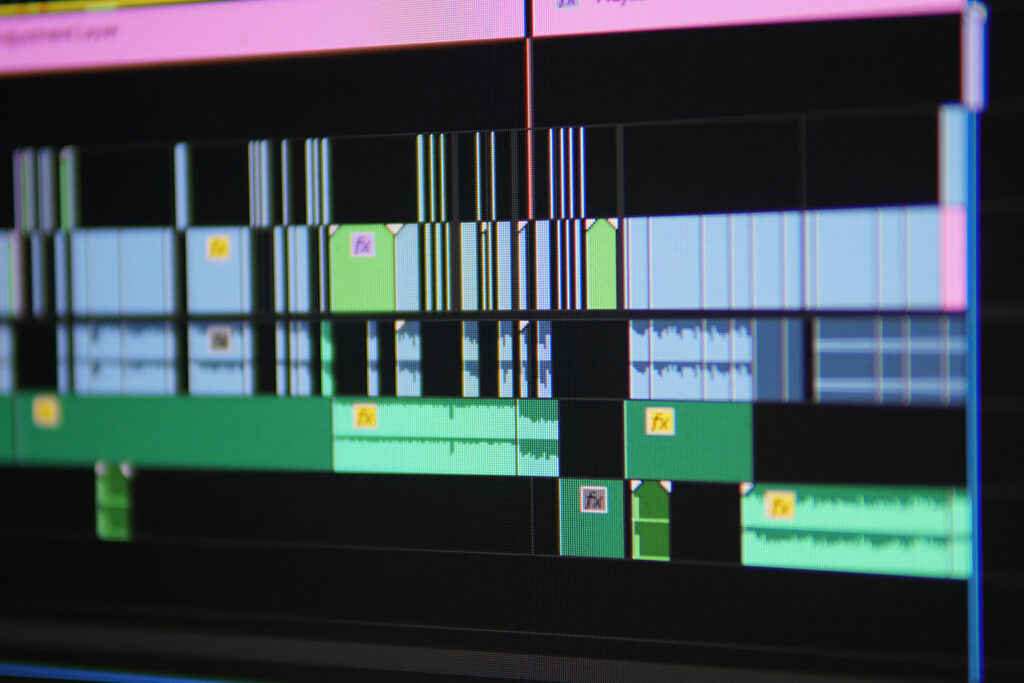
3. Motion graphics
Motion graphics are animated graphics that are added to videos to emphasize the message or add visual interest. Motion graphics can be used for titles, lower thirds (text that appears on the bottom third of the screen like names and credentials), and other video elements.
4. Special effects
Special effects are visual effects that are added to videos to make them more visually interesting or exciting. Special effects include slow motion, green screen, or color correction. Professionals editors have the best video editing apps and tools to create stunning videos for your business.
5. Transitions
Transitions are visual effects that are used to move from one shot to the next and can help create a smoother, more seamless video. Transitions can include fading to black, dissolving (when one shot fades into another), zooms and glitch effects, and more.
How to edit videos like a professional
1. Choose the right software
If you want to edit your own videos or audio files like a professional, you’ll need to use professional video software. There are different types of video editing software. The best will depend on your budget, skill level, and the type of videos you want to create.
If you’re just starting, we recommend using a free video editing program like Apple iMovie or Davinci Resolve. Apple iMovie is easy to use, while DaVinci Resolve (what many pros use) is a powerful video editing program with a free version. Users of the free version have access to all of the important tools and resources necessary to create high-quality videos; however, the program has a steep learning curve.
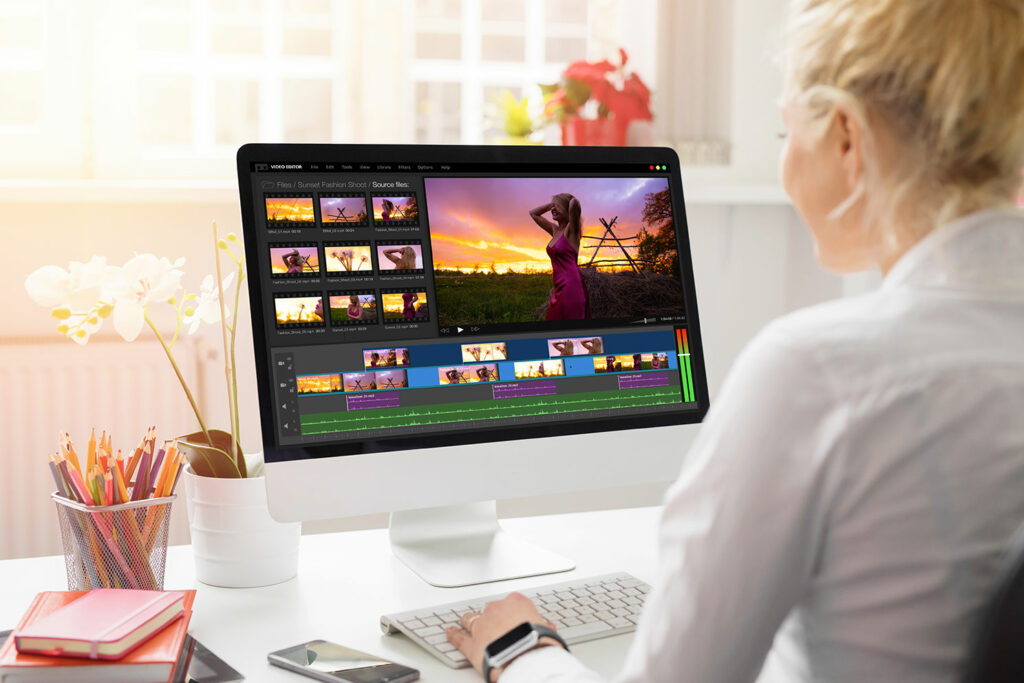
Some of the most popular editing software programs used by professional video editors include Adobe Premiere Pro and Apple Final Cut Pro. These programs offer more features and functionality but can be more expensive and difficult to use.
Whichever program you choose, ensure it’s compatible with your computer, and you have the time to learn how to use it before you start editing your videos.
2. Learn to use color correction
Color correction is adjusting the colors in your video to create a more consistent look. This is important because different types of lighting can cause colors to appear differently on camera.
By color correcting your videos, you can ensure that the colors in your videos look natural and consistent.
3. Use features like green screen and slow motion
Green screen is a technique that allows you to superimpose one video over another. This is often used for weather reports or other videos where you want to show two images side-by-side. Slow-motion is an effect that allows you to slow down a video so that it appears to move in slow motion. This can be used to add drama or emphasis to a particular scene.
4. Add images and video clips
In addition to adding your own footage, you can add images, clips, or other media files from other sources. This can be helpful if you want to create a montage or include footage you don’t have. Ensure you have the rights to use any footage that you didn’t shoot yourself. You can use an online video editor like WeVideo to find and add images and video clips from other sources. (WeVideo is among the best online video editor, for starters)
5. Add text (titles), lower thirds, and other motion graphics
Titles are text that appears at the beginning of your video and can be used to introduce your video or give your viewers information about what they’re about to watch.
The lower thirds are text that appears on the bottom third of the screen and can be used to identify people or places in your video.
Other motion graphics are animated graphics that can be added to your video to enhance the visuals or add visual interest.
6. Choose the right transitions
Transitions are visual effects that are used to move from one shot to the next and can help create a smoother, more seamless video. Transitions can include fading to black, fading to white, or dissolving (when one shot fades into another).
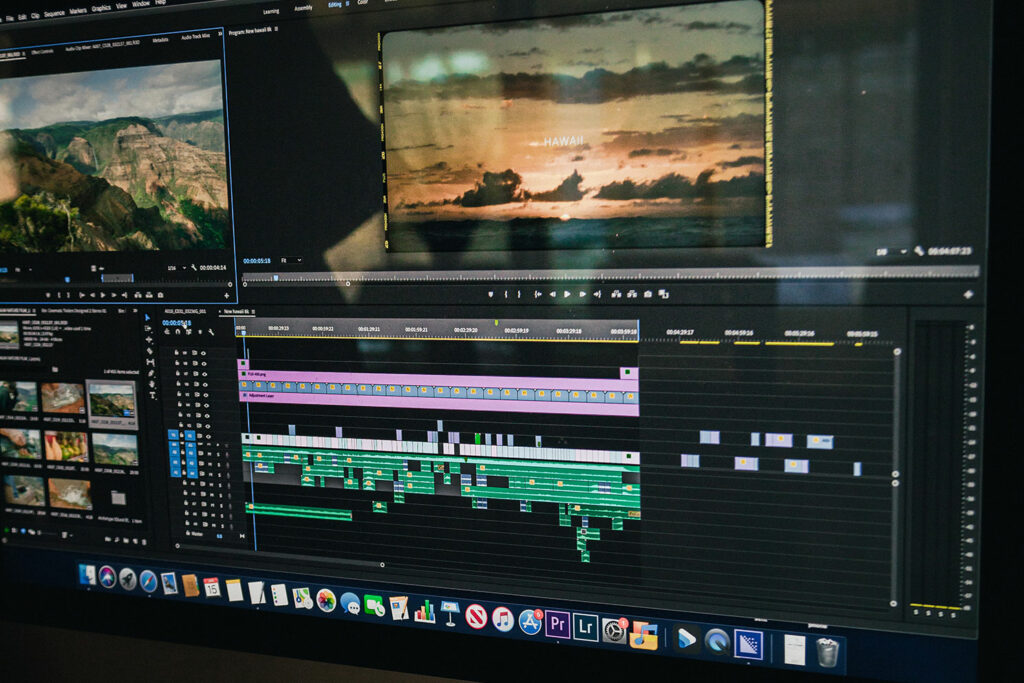
When choosing transitions, it’s important to use ones appropriate for the type of video you’re creating. For example, if you’re editing a wedding video, you might want to use a dissolve transition between each clip.
If you need to edit videos and you feel stuck, seek help!
Need help getting started with video editing?
Feel free to contact W Beyer Creative today! Our team of experts will walk with you throughout the video creation process –from storyboarding to final production.
Bottom line
Any business owner knows that first impressions are essential. When customers or clients see a professional, polished video, they’re more likely to trust the company and want to do business with them. That’s where professional video editors come in.
A good video editor can take an average video and turn it into something unique through editing. They’ll choose the best shots, add transitions and special effects, and make the video more engaging and visually appealing.
The right video editing tools can make all the difference in the final product. When businesses invest in professional video editing, they’re making a wise investment that will pay off in increased customer trust and satisfaction.

